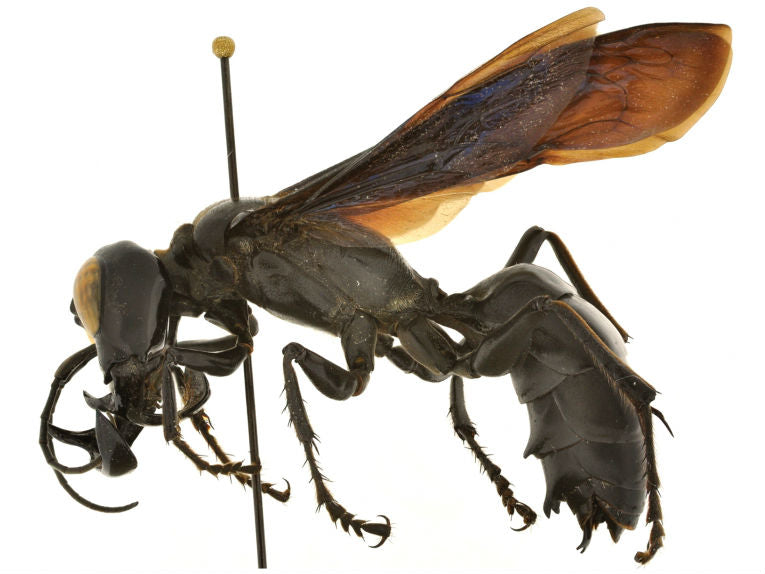The little-visited island of Sulawesi inevitably has new species discovered regularly. This one, though, is a whopper. Megalara garuda could have had the airline named after it. Lynn S. Kimsey and Michael Ohl collaborated on an article in ZooKeys, because a specimen of the animal was discovered in the Humboldt University Museum in Berlin, taken in a long-forgotten expedition of the 1930s.
Lynn Kimsey hails from the Bohart Museum of Entomology, University of California in Davis, while Michael works at the Museum fuer Naturkunde, Humboldt-Universitat, Berlin, Germany A recent expedition to south-west Sulawesi in Indonesia discovered these spectacular and giant digger wasps (Crabronidae) in the Mekongga mountains. The males are longer than 3cm and have hugely-elongated jaws, thought to be used in gripping the female during mating.

(Megalara Garuda) The male (3), with its frightening jaws, and the smaller female (4) differ; Credit: Dr. Lynn Kimsey, Dr. Michael Ohl
Sadly the jet-black creature has never been observed alive, although if those jaws are used offensively, I'm not surprised. It is likely that the jaws would function as a defence, at least. They are large mandibles, stretching as far as the front legs. The female is covered in tiny brownish hairs (pubescence), while the male has "indistinct" hairs. Both were collected from traps. Prey species are unknown and the interesting ecology will have to wait till local people and entomologists can get together. Fly Garuda and locate that wasp , before it's too late.










